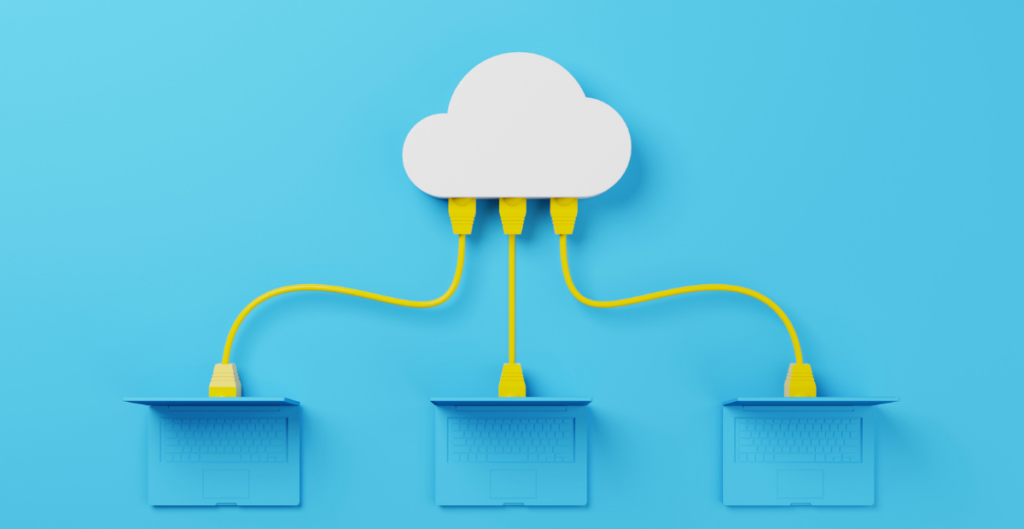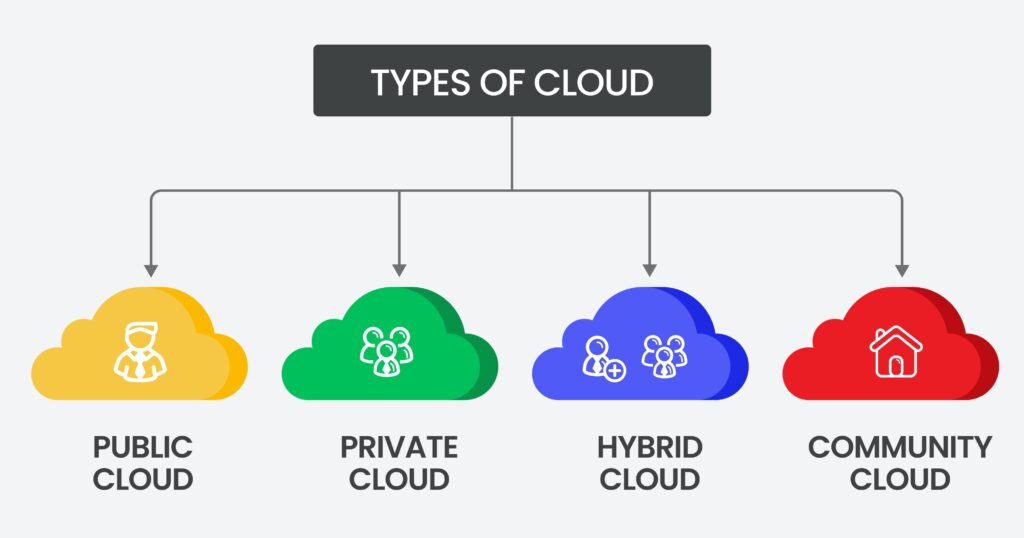simply put, cloud computing (cloud computing) is a method of delivering various services via the internet. The resource in question is an example of an application such as data storage,server, database, network, and software.
Instead of storing many files in hard drive or local storage on the computer or cellphone, based storage cloud allows you to store files as long as you have access to the internet.
Cloud computing is a popular option because it has many advantages, such as cost savings, increased productivity, speed, efficiency, performance, and security. So, it’s no wonder that many companies or people use itcloud to store data.
Understand more about cloud computing

Named cloud computing because the information is accessed online remote in a “cloud” or virtual room. Service-providing companies cloud, allows its users to store files and applications from remote servers. They can also access it as long as there is an internet connection. This means, a user does not need to be in a certain place to gain access to his files.
Cloud computing can bepublic orprivate. Public cloud provide its services publicly on the internet. While on the other hand,private cloud only provide its services to certain people. Also there are options hybrid, which combines well public cloud private cloud.
Examples of using cloud computing
Regardless of the range of services,cloud computing provides its users with a series of functions, such as:
- E-mail for exampleZimbra Mail service
- Storage,backup, data retrieval
- Build and test applications
- Analyze data
- Streaming audio and video
Cloud computing relatively new service, but has been used by various companies ranging from small to large corporations, companies or government ministries, even individual users.
Not only that,cloud computing also has services such as language processing, artificial intelligence, and standard programs at work. Anyway services that do not require you to be physically in front of hardware such as computers and laptops.
Type cloud computing based on the service

Cloud computing is not a single piece of technology like microchip or cell phone. Rather, it is a system consisting primarily of three services:software-as-a-service (SaaS), infrastructure-as-a-service (IaaS), and platform-as-a-service (PaaS).
- Software-as-a-service (SaaS) involves licensing a software application to its users. This license is usually granted via the method pay-as-you-go or on-demand. This type can be found in Microsoft Office’s 365
- Infrastructure-as-a-service (IaaS) involves a method for delivering a file from the operating system to servers and storage, via IP-based connectivity as part of a serviceon-demand. Clients don’t need to buy software or servers. Popular examples of this type are Public Cloud from Indonesian Cloud and Microsoft Azure.
- Platform-as-a-service (PaaS) is touted as the most complex. PaaS is very similar to SaaS, but the biggest difference is that, instead of delivering software online, PaaS is actually a platform for creating software that is delivered over the internet. Examples of PaaS include Salesforce.com and Heroku.
Way of workcloud computing
Each variant of cloud computing has two factors in common, namely data centers that are outside and must have internet to access them. Server resources in these data centers are aggregated to create a very large platform to be ready to host virtualized services.
These pooled resources are organized to be flexible, so users can access more storage space if needed. Likewise for resources that are not currently in use, these will be released back tocloud if it is no longer needed.
Use of based resourceson-demand it offers almost unlimited scalability and flexibility. The reason is, your needs willcloud computing constantly changing or dynamic.
Advantages of using cloud computing
Cloud computing not just being able to access files onlineremote. Blessingcloud computing, users can check email on any computer, or even store and access files from anywhere such as Dropbox or Google Drive.
Therefore, companies that usecloud can cut costs significantly. Before it wascloud, companies must buy, own, build their own management information technology (IT). On the contrary, with iscloud, companies only need a central server and IT division to ensure that the internet they have is fast and stable, so that their employees can interact with themcloud by online.
The cloud allows employees to save storage space on laptops or computers. When there is a software or program that requiresupdate, staydownload only without using traditional methods such as usingdisc orflash drive.
For example, Adobe, users can access applications via Creative Cloud with modelssubscription. This allows its users to download the latest versions and repair programs more easily.
Cloud computing from the business side
To switch to systemcloud, the first thing to do is to immediately calculate the value of the IT infrastructure that you have. There are many factors such as maintenance costsdata center, rent, pricehardware as well assoftware, CPU specifications, RAM, and others. You also have to think about whether you are going to throw it away or rebuild it forcloud and SaaS packages. Each option has its own fare. Usecloud also have to calculate the cost of additional employees, eg.
Business can use cloud computing in a different way. Some users leave their entire application or data oncloud, while there are also those who use modelshybrid, which means only some apps or data inprivate server, while the rest are inpublic cloud.
Some of the popular cloud service providers in the world are:
- Amazon Web Services (AWS)
- Microsoft Azure
- IBM Cloud
- Alibaba Cloud

https://hntfqxtiyyi.digital-business.info/ .y23R4ixXmH6
ਵਿੰਟੇਜ ਪੋਰਨ .3x8RuLPK0yw
レズビアンのポルノ .f0eqUroOSKd
ਖਿਡੌਣੇ ਪੋਰਨ ਹਨ .pTUHtyiXUGM
ਬੇਤਰਤੀਬ ਪੋਰਨ .d5DNnV0GFXH
ਵੱਡੀ ਛਾਤੀ ਪੋਰਨ .5JJvNfjzmT0
異人種間のポルノ .PEAxn57BLBI
ladesbet ハードコアポルノ ladestinemi.Do0zmMqiws8
ladesbet ਤਿੱਕੜੀ ਪੋਰਨ ladesinemi.tM2CQXRHptj
blowjob ਪੋਰਨੋਗ੍ਰਾਫੀ madisonivysex.s0AzY2KdXkf
एमआईएलए अश्लील hkyonet.WAnHnARmtYw
समलैंगिक अश्लीलता txechdyzxca.1xtTRKPOKMe
विंटेज आ युवा पोर्न के बारे में बतावल गइल बा hjkvbasdfzxzz.cgVpKg471xz
मजेदार अश्लील qqyyooppxx.aVHS5izVK7R
falbobrospizzamadison Lesbians porn jkkıjxxx.2BrlpoE8ezf
landuse Russians porn lancdcuse.MDSLFlsCgzi
jenniferroy フェチポルノ japanesexxporns.c6KH2WQOcUq
goodhere Black and White porn vurucutewet.uyFKDwzPhPv
fashionflag porn hd k fashionflag.oTYlGf3IdbV
daktilogibigibi.S5w9DVF8WDvH
vurucuteamgeldi.h0IktJcw0YBn
vurcazkircazpatliycaz.L0i662fK62lt